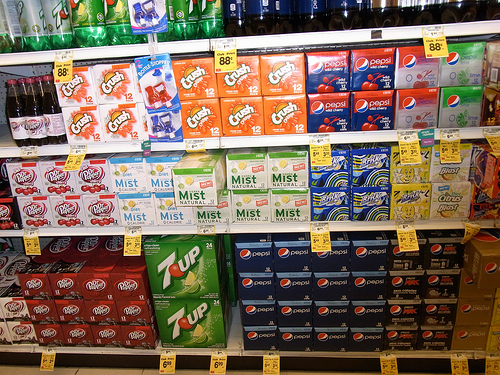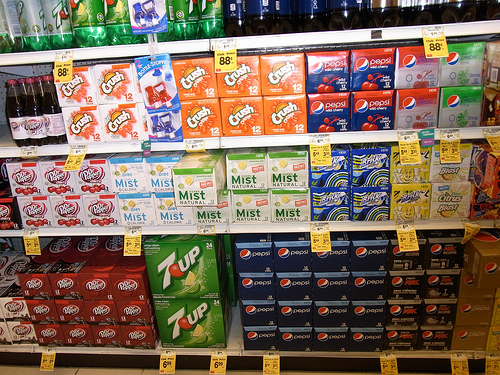 Photo: Like the Grand CanyonOn average, Americans now get nearly 10 percent of their calories from soda and other sugary beverages. This news comes from a new report released by The Centers for Disease Control and Prevention. Teens and young adults (aged 12-40) drink more soda compared to younger and older people on average, as do the poor. The elderly and those with above-average incomes drink the least.
Photo: Like the Grand CanyonOn average, Americans now get nearly 10 percent of their calories from soda and other sugary beverages. This news comes from a new report released by The Centers for Disease Control and Prevention. Teens and young adults (aged 12-40) drink more soda compared to younger and older people on average, as do the poor. The elderly and those with above-average incomes drink the least.
Okay, so maybe learning that half of all Americans drink a sugar-sweetened beverage on any given day doesn’t rock your world — although, heaven help us, it’s becoming harder to deny that soda has indeed become a staple food. But the fact that 5 percent of Americans over the age of 2 (!!) drinks four or more cans of soda every day is alarming. That amounts to over 550 calories — just from the sweetener in soda! (And statistics wonks take note: Consumption appears to follow a power law.)
Meanwhile, the U.S. Department of Agriculture (USDA) is sending mixed messages when it comes to sugar. On the one hand, their updated 2010 “My Plate” dietary guidelines suggest that “empty calories” — which they define as added sugars and solid fats — make up no more than around 12 percent of daily calories. On the other hand, they did set an actual recommended maximum allowance for sugar consumption but buried it deep in the full dietary guidelines report [PDF] — likely known only to nutritionists and researchers.
And then they set the bar quite low by adopting a 2002 Institute of Medicine recommendation that said no more than 25 percent of our calories should come from added sugar. You could call this a step in the right direction; in years past (and as recently as 2005), the USDA neglected to include any maximum number. But this number is significantly higher than the 5 percent of total calories from added sugar endorsed recently by the American Heart Association (a recommendation that only around 10 percent of American adults are able to follow).
To put these limits in perspective, a study that appeared last year in the Journal of the American Medical Association found that nearly one-quarter of all American adults — over 50 million people — already either exceed or are close to the 25 percent limit. If you need a visual, this New York Times Magazine piece on sugar indicates that the average American (who keeps added sugar closer to 15 percent of total calories) consumes over 90 pounds of added sugar per year — so those 25 percenters are looking at a pile that weighs in at more like 150 pounds per year.
To make matters worse, we’re now starting to see science that suggests the USDA’s standard, if followed, might be high enough to make you sick.
A soon-to-be-published study out of the University of California, Davis found evidence that consuming 25 percent of total calories from added sugars can quickly set you on the road to heart disease. It was a short-term study involving volunteers who were given either high-fructose corn syrup (HFCS), fructose, or glucose (a type of sugar that people generally don’t eat in its pure form). After two weeks, those who ate either fructose or HFCS displayed increased levels of bad cholesterol, triglycerides, and a type of protein that’s associated with plaque buildup in arteries — all of which are typically associated with heart disease.
For those keeping score at home, the researchers did not include sucrose — aka table sugar — in the study because, as the lead researcher Kimber Stanhope explained to me in an email, current science strongly indicates that sucrose and HFCS would have similar effects.
However, in light of the response from the media, not to mention the Corn Refiners Association (CRA), who were a bit miffed at having HFCS singled out, Stanhope said:
… [W]e modified our specific aims and are currently studying subjects consuming 25% [of total calories] as sucrose-sweetened beverages under the same protocol as described in the new paper.
As the CRA was quick to point out, this study is far from conclusive. But it’s very suggestive that the government is far too generous with the amount of added sugar it’s content to recommend Americans consume. And that’s something we should all be worried about.



